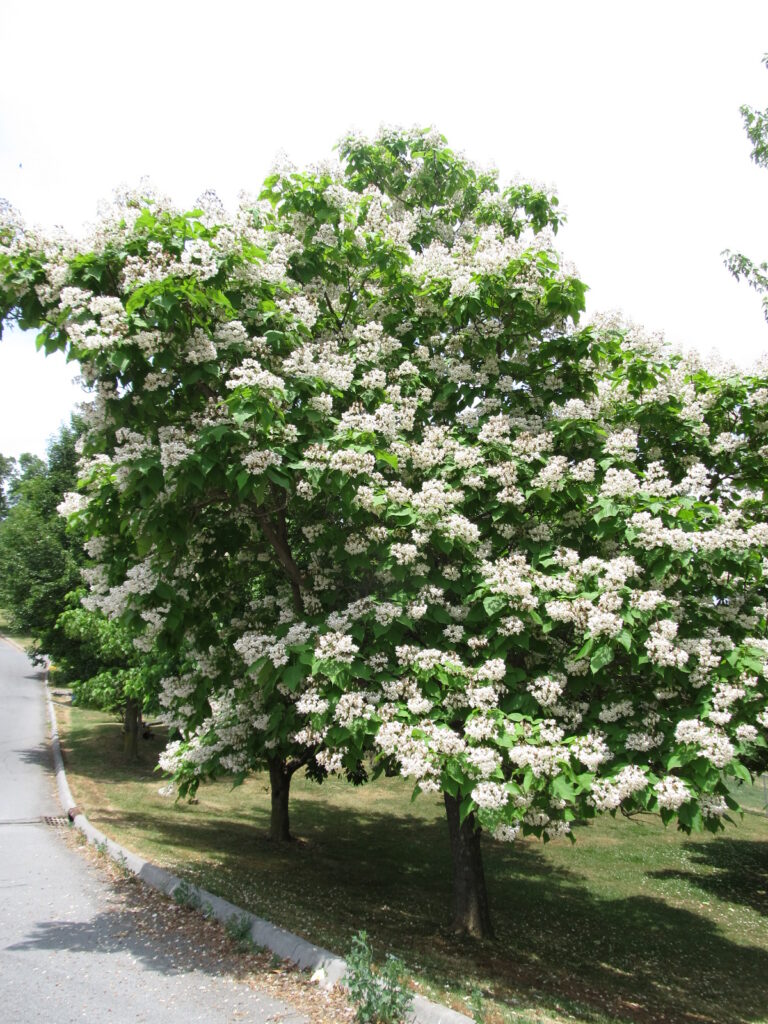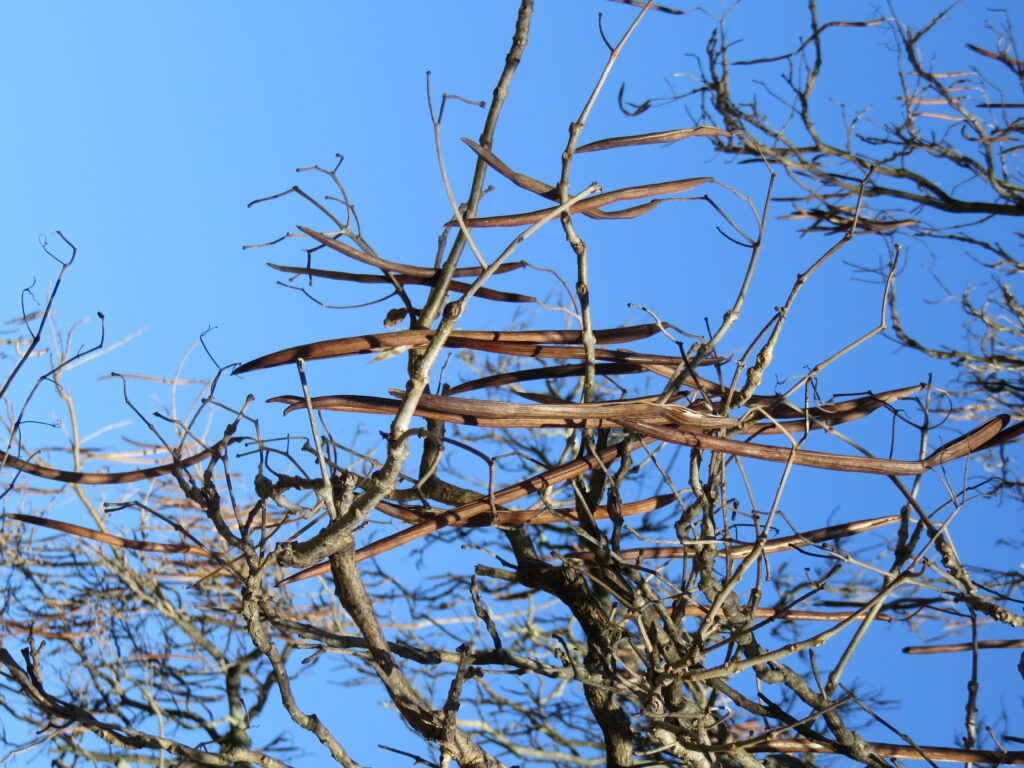Catalpa Tree

Northern catalpa or cigartree (Catalpa speciosa) overpowers most private landscapes by their enormous presence (USDA hardiness zones 4-8). This 40-60 feet large native tree commonly grows along roadsides, particularly on bottomlands from Illinois and Missouri south thru Arkansas and Tennessee. Catalpa is not a tree seen planted in most residential neighborhoods because of its fast growth rate, messy behavior, and enormous size.
Without question catalpa is treasured for its showy fragrant white flowers in late May into June. The orchid-like blosoms are surely beautiful. Numerous two-inch long white flowers are borne on large terminal spikes, many unfortunately hidden beneath the enormous catalpa leaves. Each flower are marked with small gold spots within its frilly edged corolla. Narrow long cylindrical cigar fruits, 8 – 15 inches in length, are easily visible in the fall and winter months.

In summer catalpa’s huge heart –shaped pale green leaves measure 8 – 12 inches in length and width and provide excellent summer shade. Small birds often seek shelter within their dense tropical-like foliage cover.
The bad news is their spent blooms turn into a soggy, slippery, smelly mess when they drop onto a sidewalk, deck, patio, driveway, or pool side. In the autumn months add their trashy dried seed pods to your raking list; their sharp points may result in pin-point skin pricks incurred during fall cleanup.
Even mild winds can leave your yard covered with sticks and twigs that fall from this brittle-wooded tree. Wide-ranging, invasive roots can infiltrate foundations, sewer lines, collapse retaining walls, or penetrate underground swimming pools.
Catalpa trees are often visited by the catalpa sphinx moth whose larvae (caterpillars) are prized for bait by fishermen. Hummingbirds are a major pollinator that are attracted to its floral nectar. There are no listed cultivars of northern catalpa (C. speciosa).

Southern catalpa (C. bignonioides) is another native species native to the Gulf Coast region from northern Florida across the Mississippi. It grows smaller, averaging 35-50 feet in height (zones 5-9). Both species self-seed readily.

 Posted in
Posted in 
